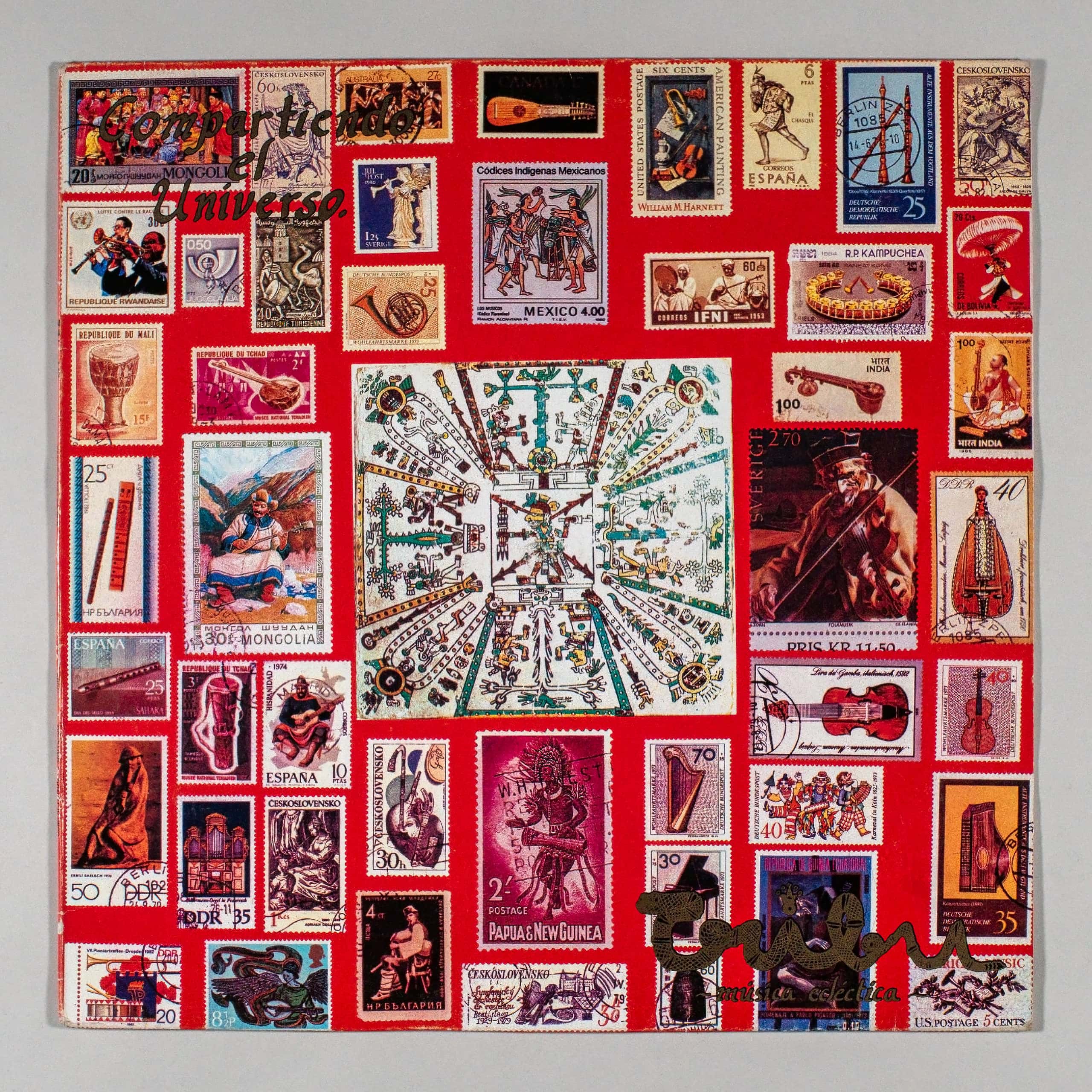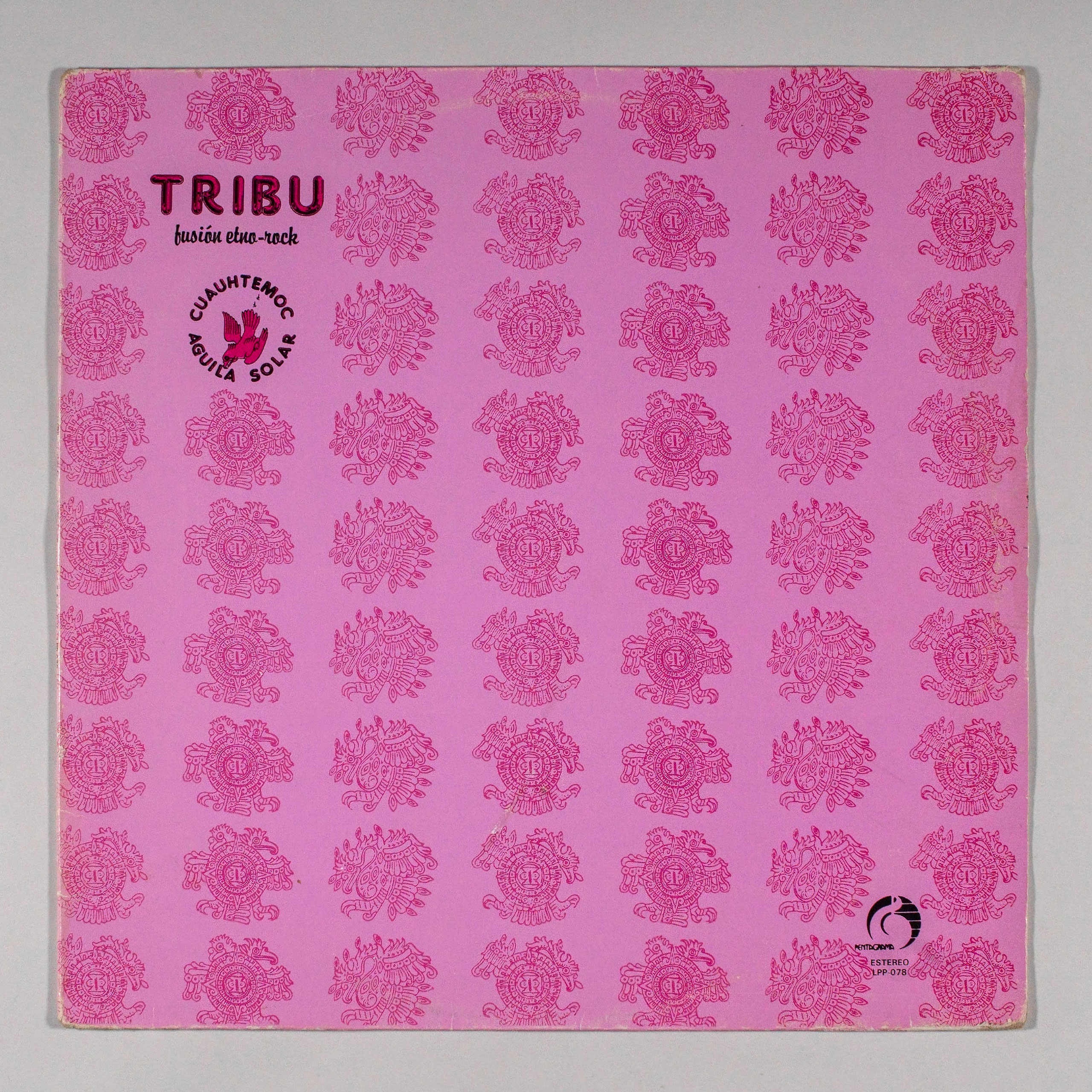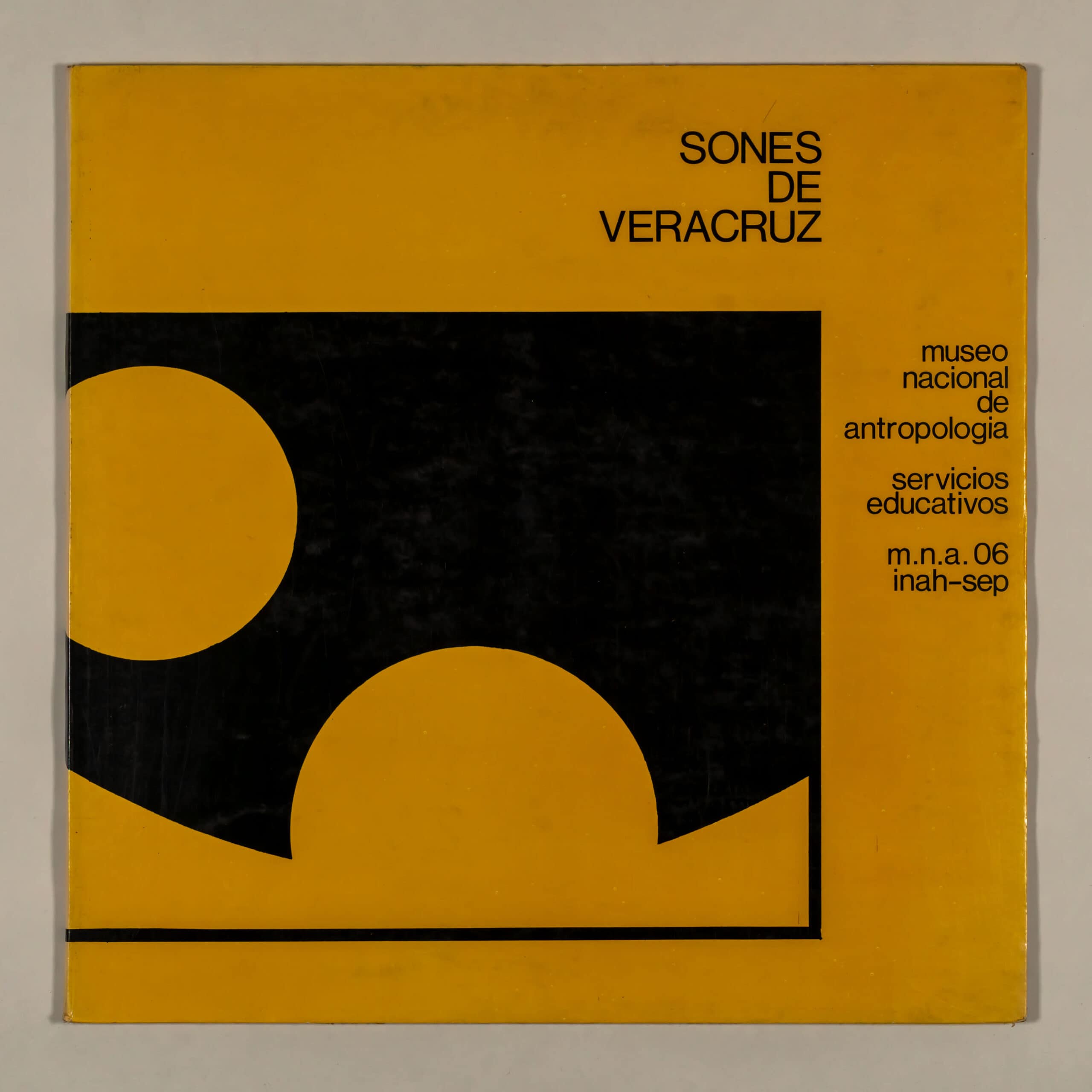
|
Label: INAH-SEP MC-211 Released: 1969 |
Country: Mexico Genre: Sound Jarocho Sound |
Info:
SOUNDS FROM VERACRUZ
INAH 6
national institute of anthropology and history inah-sep
The so-called sound from Veracruz or jarocho is one of the richest and most varied popular musical traditions in the country; For this reason and due to particular circumstances, it has become widely known through commercial broadcast channels. However, this knowledge, despite its relative magnitude, is partial and only reflects some aspects or varieties of the sound jarocho. This phonogram cannot and does not intend to make up for the aforementioned deficiencies, but tries to explore forms, parts of the repertoire or areas that have been left out of commercialization; thus, this work can be seen as a testimony that aims to complete the image of one of the most splendid veneers of popular tradition.
In the coastal plain of the state of Veracruz, from the port of the same name to the border with the state of Tabasco, a still unknown number of local or regional traditions flourish in the interpretation of the Veracruz sound. They all keep a basic repertoire in common; they also share the use of similar instruments, all of them stringed, although in different combinations. Everything tends to confirm a unity for this genre, probably formed in the 18th century, from Hispanic influences, mainly Andalusian and Canary Islands. But within this fundamental unit, variants arose, to a great extent fostered by the great margin of improvised creation that the genre demands of its performers; thus, in some parts they evolved towards instrumental virtuosity, while in others emphasis was placed on the ensemble. The accumulation of couplets happened everywhere, but in different directions; in some, their strength was accentuated, in others, the culterano game was given. Professionalism emerged in many places, but in others the vocational character of the unpaid interpreter was preserved. Out of these varieties arose still others, due to the exceptional performer or integrated ensemble, or to the talented traditional composer. With all this, a complex and multiform tradition was formed. The process of diversification through creation and accumulation is fully in force and reflecting it is another of the objectives of this volume. The recordings were made in the field, during the year 1969.
A SIDE
1. THE FANDANGUITO. On the model of one of the most deeply rooted traditional sounds, Arcadio Hidalgo, from Minatitlán, composed a few tenths that he interspersed with old verses and refrains. This is an example of contemporary creation. A single interpreter, Antonio García de León, accompanying himself with the jarana, is in charge of the execution.
Text:
Gentlemen, what are you is this?
Gentlemen, the fandanguito.
The first time I hear it,
My God, how beautiful.
Gentlemen, what are you?
Gentlemen, the fandanguito.
Well to the ela, well to the ela,
more to her, blow of the sea,
blow of the sea, little sailing boat,
tell me my good where it takes me,
if for Spain or for another land
or to sail out to sea.
I am like my jarana:
with the heart of cedar,
that’s why I never break
and my chest is a bell;
and it’s my country trova
like the song of the goldfinch,
that’s why I’m a partygoer
and I refine my throat well
and my heart rises
a wind over the pasture.
My name is Arcadio Hidalgo,
I am from a peasant nation,
that’s why it’s my fine song,
colt on which I ride;
and oh! I want to tell you something
and in bursting this are,
i mean rightly
the injustice that I suffer
and that it is the one that I do not deserve,
cause of exploitation.
And to row and to row,
to row sailor,
than the one who does not row
he does not earn money.
To row, to row in the river,
than the one who does not row
does not win ship
I went to the revolution
to fight for the right
to feel on my chest
and a great satisfaction;
but today I live in a corner,
singing to my bitterness,
but with sure faith
and screaming at fate
what is the peasant man
our future hope.
And oh! that I love you,
and oh! that I love you,
I love you madam
because you comb your hair in the style of Spain.
I love you, I want to tell you
that last night at eleven
I was going to die.
I plant corn, plantain and pineapple
under the rays of the sun;
I also grow a flower
with my crafty revelry
And it’s the morning star
the one that marks my pain,
the one with its glow
is setting my destiny,
and that announces to the peasant
which begins the work.
And a storm of protest
I dreamed that he got up
and that finally buried
to this animal that stinks;
that screams like a beast,
in the middle of his corral,
that makes us so bad
and it causes us great pain,
sucks our sweat
and you have to kill him, compá!
Oh! I’m leaving
Oh! I’m leaving
I’m going, beloved garment,
beautiful star
at dawn.
I’m leaving
I’m going pretty,
beautiful star
in the morning.
Performer: Antonio Garcia de Leon.
2. EASTER. Santiago Tuxtla. Throughout the domain of the Veracruz sound, from Christmas to Three Kings Day, troupes are formed that go through the streets singing to be invited by the owners of the house; the specific couplets for this occasion are called “la rama” or “la Pascua”. Santiago Tuxtla is one of the bastions of the most “rustic” sound; at least that is how the inhabitants of the region describe it. To illustrate this style, an instrumental version has been selected. It is performed only with locally made guitars; one of them, the so-called fourth, in charge of bass accompaniment, is exclusive to this area. The requinto, the last to enter, has eight strings in this place and performs the alto ornament. The almost obsessive repetition is also characteristic of this local tradition, perhaps the most conservative of those recorded.
Performers: Francisco Trujillo, fourth guitar; Ángel Trujillo, third guitar; Dionisio Vichi Mazo, second guitar; Juan Zapata, requinto.
3. THE DWARFS. Saint John the Evangelist. The southern tradition of sound, from the Minatitlán area, is also accompanied only by guitars; in this case with two jaranas and a requinto of four strings. Traditionally conservative in terms of repertoire, it is at the same time very varied in its style of interpretation. The first characteristic mentioned is the one that this example illustrates: an old jarabito known since colonial times.
Text:
The dwarfs want panties,
So buy them with
pork rinds (encore).
And oh! how cute are the dwarves
when they dance cousins brothers
(Bis).
They are, they are, they are the dwarves
little ones, very veterans.
The dwarfs of Nacajuca
they are tiny like a yucca
(Bis).
And oh! how beautiful are the dwarves,
when they are danced by veracruz
(Bis).
They are, they are, they are the dwarfs,
little ones, very veterans (bis).
The dwarfs want a shirt
Well, buy it with longaniza
(Bis).
And oh! how beautiful are the dwarves,
when they dance cousins brothers
(Bis).
They are, they are, they are the dwarves
little ones, from Veracruz (bis).
Performers: Arcadio Hidalgo, crier and revelry; Noé González, requinto; Benito González, revelry.
4. THE CHICKS. Boca del Río. From Papaloapan to the port of Veracruz, the sound is characterized by virtuosity, largely supported by the use of the harp. That region of the Veracruz sound is the best known; however, it is still possible to locate old sounds, marginalized from the discriminatory process of commercialization. This is one of them.
Text:
The chicks peep peep,
the hawk takes them,
the hawk takes them,
the chicks peep, peep (bis).
And the chicken saying:
Oh, what a damn animal!
ah, what a damn animal,
everything is eating it (bis).
Come on, Lazaro Patricio,
your hat is flying
down the street he says
my love is running out
Come on, Lazaro Patricio,
your hat has already flown
through the air is saying
that your love is over
the chickens run away
through the garden gate
through the garden gate
the chickens run away
And the chicken saying:
Ah, damned tacoacin,
ah, damn tacoacin,
everything is eating it.
Come on Lázaro Patricio… etc.
the chickens run away
through the gate,
through the gate,
the chickens run out (bis).
And the chicken saying:
what a fucking weasel
what a fucking weasel,
everything is eating it (bis).
Come on Lázaro Patricio… (bis).
Performers: Isidoro Gutiérrez, crier and revelry; Daniel Cabrera, revelry; Eusebio Arsola, revelry; Narciso Huerta, revelry; Tirso Velázquez, harp.
5. ZACAMANDU BULL. San Juan Evangelista. In some areas the sound has retained a magical and legendary content. In this example, each of the couplets summarizes or refers to a legend of charms related to the cattle tradition of the south of the state.
Text:
Oh, oh,
in the farm of El Horcón,
at the Horcón farm
there is a light cow,
there is a light cow,
that she says that she gives it away,
that she says that she gives it away
Don Jose Julian Rivera,
Don Jose Julian Rivera.
oh oh
let’s go wanting,
let’s go loving,
It doesn’t weigh me down
nor will it weigh me down;
oh, if it weighed on me,
yes, yes, very little it will be,
yes, yes, very little will be.
oh oh
the bull went to the cowboy,
the bull went to the cowboy
because the peal burst,
because the peal burst
and since it was money,
and since it was money,
there he tied himself up again,
with seven leather arms.
that does not go, does not go,
let’s go wanting… etc.
oh oh
I’m from Cerro Colorado
I’m from Cerro Colorado
where the lion is painted
where the lion is painted;
I’m a boy and I don’t lower myself
I’m a boy and I don’t lower myself
I don’t even touch my heart
I don’t even touch my heart.
oh oh
to the rumba, rumba
I will go to the rumba;
I have never been married
I have never been married
I will marry you
I will marry you.
Performers: The same as Side A, number 3.
6. THE PETENERA. Boca del Río. This sound is one of the most widely spread in Mexico. It is known in the Huasteca, the Costa Chica de Guerrero and the isthmus of Tehuantepec, in different versions; It is also sung in Andalusia, where it forms part of the cante jondo repertoire. This suggests the colonial origin of this sound. In Veracruz it has almost been forgotten, although it is still possible to locate it in various areas.
This is the version from the north of the state, as Don Daniel Cabrera remembers it, over seventy years old and sixty-five as a singing professional. This interpreter began as a town crier or solo singer of coplas at the age of seven, in the days when children carried out this task; According to Don Daniel, it was at the time when the sound of the port of Veracruz was interpreted with the violin, instead of the requinto.
Text:
Petenera, petenera,
Give me a bouquet from your stick.
petenera, petenera,
Give me a bouquet from your stick.
Who made you naughty?
Oh, alone you see.
who made you naughty
that petenera called you
petenera, petenera,
Give me a bouquet from your stick.
Oh, lonely, Soledad,
Solitude that I would like,
Oh, lonely, Soledad,
Solitude that I would like,
that you become anonymous
and that I eat it,
mature, mature,
that the stick fell.
Who put you Petenera
He didn’t know how to name you.
Who put you Petenera
He didn’t know how to name you.
that you had to call yourself,
oh, alone you see it,
that you should be called
the downfall of men.
Who put you Petenera,
he didn’t know how to name you.
Oh, alone, Soledad…, etc.
Who put you Petenera,
surely he was not himself.
Who put you Petenera,
surely it was not itself.
That you had to call yourself
oh, alone you see it,
that you had to call yourself,
the downfall for me.
Who put you Petenera,
surely it was not itself.
Oh, alone, Soledad… etc.
Performers: The same as on Side A, number 4, except that Daniel Cabrera announces and responds with the refrain Isidoro Gutiérrez.
B SIDE
1. THE SIQUISIRÍ. Otatitlán. In Sotavento, a region dominated by the Papaloapan River, a virtuous instrumental tradition developed for some time, which possibly contributed to, and now suffers from, the commercialization process of the Veracruz sound. But the individual creator of the area, such as Rutilo Parroquín, has managed to overcome commercial limitations and reached levels that are more similar to high art, as can be seen in this requinto solo. With the small four-string guitar, the interpreter plays on the theme of one of the most traditional sounds.
Performer: Rutilo Parroquín, requinto.
2. THE TAP DANCE. San Juan Evangelista. The Veracruz sound is a genre danced by single and confronted couples. Dance is no less complex and rich than music and equally requires virtuosity. Music and dance are combined in their maximum expression: the zapateado. In this version, Don Arcadio Hidalgo says tenths that are integrated into the complex string accompaniment and the rhythmic accent of the tap dance.
Performers: The same as Side A, number 3; In addition, Antonio García de León, jarana.
3. THE MACAW. Santiago Tuxtla. The strength of the Los Tuxtlas tradition is also perceived in the song, based on traditional refrains and couplets created or preserved by the town crier, almost as individual property, in such a way that the verses are associated with the name of their interpreter. The recording conditions made it impossible to fully transcribe the text.
Text:
I’m going to start singing
macaw verses,
macaw verses,
I’m going to start singing.
if you want to hear it
as it is sung in Celaya,
you can prepare
. . . . . . . . . . . . . . . . . . . . . . . . . . . . . . . .
And fly, fly, fly
fly to the castle
and if you love me, pretty
By God I’m going with you.
And fly, fly, fly
fly to the castle
and if you love me, pretty
By God I’m going with you.
looking at his macaw
my owner had fun
my owner had fun
looking at her macaw.
But casting his gaze
to where she saw you,
when she looked at me
she go sign that she did.
Fly, fly, fly
you already know where;
my good, I die
if you snub me for being poor.
Fly, fly, fly
you already know where;
my good, I die
if you snub me for being poor.
I have to take you to the sanctuary
to enjoy the pleasures
to enjoy the pleasures
I have to take you to the sanctuary.
You will ride in an airplane
and in a wagon car,
now come here
. . . . . . . . . . . . . . . . . . . . . . . . . . . . . . . .
Fly, fly, fly
fly white macaw,
if they take you to the fair
that starts in the ravine.
Fly, fly, fly
fly white macaw,
if they take you to the fair
that starts in the ravine.
I would like to be a macaw
but…
. . . . . . . . . . . . . . . . . . . . . . . . . . . . . . . .
I would like to be a macaw.
like beach sand
… of Salamanca,
… of Salamanca,
that are treated in Celaya.
that flies, flies, flies,
I’m going to the inn
let the macaw finish
and now that another sound comes.
that flies, flies, flies,
I’m going to the inn
let the macaw finish
and now that another sound comes.
Performers: The same as Side A, number 2; in addition, Manuel Valentín Coyotl, town crier.
4. THE WOODPECKER. Boca del Río. One of the brightest and most difficult sounds. In this case it is interpreted with chained couplets, a style that has already lost popularity in the port area.
Text:
The woodpecker
always live passionate
and the woodpecker.
Oh! The goldfinch replied:
And man, he lives carefully
that being me a charcoal burner,
a woman has smeared me.
I met a carpenter
that you didn’t know him
I met a carpenter
that formed a jar
of the plant of a chaquiste;
I met a carpenter
that you didn’t know him.
of the first birds
that in this world have gurgled,
of the first birds,
the mockingbird and the goldfinch.
And one of the most appreciated
and of the most appreciated
I met a carpenter.
It’s pretty light that I’ve loved
just for an idea,
It is a beautiful light that I have loved;
but i’m disappointed
that the one who looks for an ugly woman,
he lives very carefree
and nobody wants it.
of all friends I am
and they must give me their hand,
I am a friend of all
in the place where i am
I feel very proud,
I show them that I am
Veracruz jarocho.
My love is the center of battle
I am going to cease to be; (?)
my love is the center of battle
but keep track and score,
they will pay me to see,
because just leave,
and if not, you’re going to see me.
apple bird,
why don’t you eat apples?
little apple bird?
How do you want me to eat them?
if I did not approach the branch.
apple bird,
why don’t you eat apples?
I am a woodpecker
of the colored feathers,
I am a woodpecker.
They named me the liar
because I lied to a married woman,
because i offered him money
And then I didn’t give him anything.
Water I would like to be
Where are you going to bathe?
water I would like to be;
because I love you woman
and I have not been able to forget you,
just to be able
wherever you want to go.
I’m going to say goodbye
because my road is long,
I’m going to say goodbye;
I just come to tell you
I’m going to the sanctuary
and if I die,
They pray a novena for me.
Performers: The same as on Side A number 4.
Tout: Eusebio Arsola, Isidoro Gutiérrez and Daniel Cabrera.
5. THE BRANCH WITH FUGA DE BAMBA. Saint John the Evangelist. The “Pascua” or “rama” is sung in the streets and the singers stop from house to house. When the neighbors open their doors and offer something to the singers, they sing La bamba as they enter. This exceptional version also includes the recitation, a sample of the old style that remains in force in the south of the state.
Text:
Icense we ask
decent family,
if I have offended them,
forgive my people
(Chorus)
oranges and limes,
limes and lemons,
the most beautiful is the Virgin
that all the flowers
forgive my people
that she came to her house,
if they are religious,
hear what happens
(Chorus)
hear what happens
with great joy,
well they knew very well
that the Messiah was born.
(Chorus)
That the Messiah was born,
which he was expected,
and the prophet Elijah
I had already announced it.
(Chorus)
He had already announced it.
with great pleasure,
that the true God
would have to be born
(Chorus)
he would have to be born
and in glory we see him,
. . . . . . . . . . . . . . . . . . . . . . . . . . . . . . . .
. . . . . . . . . . . . . . . . . . . . . . . . . . . . . . . .
(Chorus)
Hear the rooster that crowed
giving notice to the whole world:
[recitation]
Well the rooster that crowed,
giving notice to the whole world,
that the lamb was born,
saying Christ was born.
If he sang for joy
for the men they would be,
to see what was just coming
Jesus Christ to the world, then
and that’s why I say that he is
night of great joy [sung]
night of great joy.
Alas, he departed from the field very loyal
an ox with much love…
[recitation]
He left the field very loyal
an ox with much affection,
to warm the Child,
he went leaning into the portal;
in wanting to lower it,
he hastily rushed
to see a funny Child,
with the bath that he threw,
He warmed the same God,
in a blissful [sung] manger,
in a happy manger.
You are like the rose
you are like the rose
of Alexandria,
red at night,
red at night,
white by day
So up and up
well up and up
they are coming,
like popcorn
that they are flying,
that are flying,
that they are flying
With this and just say,
with this and just say
because I’m leaving,
because I’m leaving,
have a good night,
have a good night,
tomorrow and today.
So up, up,
I’ll go upstairs
I’m not a sailor,
I’m not a sailor,
I will be for you,
I will be for you,
I will be for you.
The woman that I want
Ay, ay, ay, ay,
the woman that I want
she is a brunette
because she dances La bamba
and it’s a good thing.
What a ding, ding,
what a tilan, tilan,
what a tilan, tilan,
let La bamba ring,
it will chime, it will chime, it will chime.
a pretty girl,
a pretty girl,
we go where,
where the moon rises
and the sun hides.
Well up and up.
Well up and up
they are already carrying,
like popcorn
that they are flying,
that are flying,
that they are flying.
Performers: The same as Side B, number 2.
Recording and notes by Arturo Warman
Note: The National Institute of Anthropology and History appreciates the help received from many people in the preparation of this record. Very especially, that of the musicians who participate in it.
Secretary of Public Education, engineer Víctor Bravo Ahúja.
Undersecretary of Popular Culture, doctor Gonzalo Aguirre Beltrán.
Director of the National Institute of Anthropology and History, Dr. Guillermo Bonfil Batalla.
Director of Museums of the National Institute of Anthropology and History, architect Iker Larrauri.
Publications Coordinator of the Directorate of Museums, Professor Ma. Cristina S. de Bonfil.
Director of the Record Series, teacher Irene Vázquez Valle.
Mexico, 1975 / 1976, 3rd / 5th edition.
© INAH
A SIDE
THE FANDANGUITO ■ EASTER ■ THE DWARFS ■ THE CHICKS ■ ZACAMANDU BULL ■ THE PETENERA
B SIDE
THE SIQUISIRIRI ■ THE TAP DANCE ■ THE MACAW ■ THE WOODPECKER
Tracklist:
SOUNDS OF VERACRUZ
SIDE 1
- A1THE FANDANGUITO 5:18
Performer(s): Antonio García de León,
- A2 EASTER 2:21
Performer(s): Francisco Trujillo, fourth guitar; Ángel Trujillo, third guitar; Dionisio Vichi Mazo, second guitar; Juan Zapata, requinto.
- A3 THE DWARFS 2:34
Performer(s): Arcadio Hidalgo, crier and revelry; Noé González, requinto; Benito González, revelry.
- A4THE CHICKS 2:26
Performer(s): Isidoro Gutiérrez, crier and revelry; Daniel Cabrera, revelry; Eusebio Arsola, revelry; Narciso Huerta, revelry; Tirso Velázquez, harp.
- A5 ZACAMANDU BULL 2:48
Performer(s): The same as Side A, number 3.
- A6 THE PETENERA 2:19
Performer(s): The same as on Side A, number 4, except that Daniel Cabrera announces and responds with the refrain Isidoro Gutiérrez.
SIDE 2
- B1 THE SIQUISIRÍ 2:31
Performer(s): Rutilo Parroquín, requinto.
- B2 THE TAP DANCE 1:38
Performer(s): The same as Side A, number 3; In addition, Antonio García de León, revelry.
- B3 THE MACAW 3:50
Performer(s): The same as Side A, number 2; In addition, Manuel Valentín Coyotl, crier.
- B4 THE WOODPECKER 2:35
Performer(s): The same as on Side A number 4.
- B5THE BRANCH WITH FUGA DE BAMBA 6:10
Performer(s): The same as Side B, number 2.
Credits:
Field recordings by Tomás Stanford and Irene and Arturo Warman.
Arturo Warman’s notes.
Design of the cover by Constantino Lameiras.
Photographs by Andrés Medina.
Arturo Warman: Engraver, Adjunct Material Writer
Thomas Standford: Engraver
Victor Acevedo Martínez: Editor
Martín Audelo Chícharo: Editor
Guadalupe Loyola Zárate: Editor
Benjamín Muratalla: Editor, Director
Irene Vázquez Valle: Editor
H. Alejandro Castellanos Garrido: Editor, Researcher
Gabriela González Sánchez: Editor
Jazmín Rangel Evaristo: Editor
Grandma records
Alfredo Huertero Casarrubias: Illustrator
Guillermo Santana Ramírez: Designer
Antonio García de León: Musician
Francisco Trujillo: Musician
Ángel Trujillo: Musician
Dionisio Vichi Mazo: Musician
Juan Zapata: Musician
Arcadio Hidalgo: Musician
Noé González: Musician
Benito González: Musician
Isidoro Gutiérrez: Musician
Daniel Cabrera: Musician
Eusebio Arsola: Musician
Narciso Huerta: Musician
Tirso Velázquez: Musician
Rutilo Parroquín: Musician
Manuel Valentín Coyotl: Musician
Links:
otrootroSold For:
Highest Price:
$720 MXMedium Price:
$420 MXCondition:
Media Condition:
Mint (M)Sleeve Condition:
Mint (M)Condition Notes:
Sealed.
Other Versions:
SOUNDS OF VERACRUZ with the CENZONTLE label made in 1990.







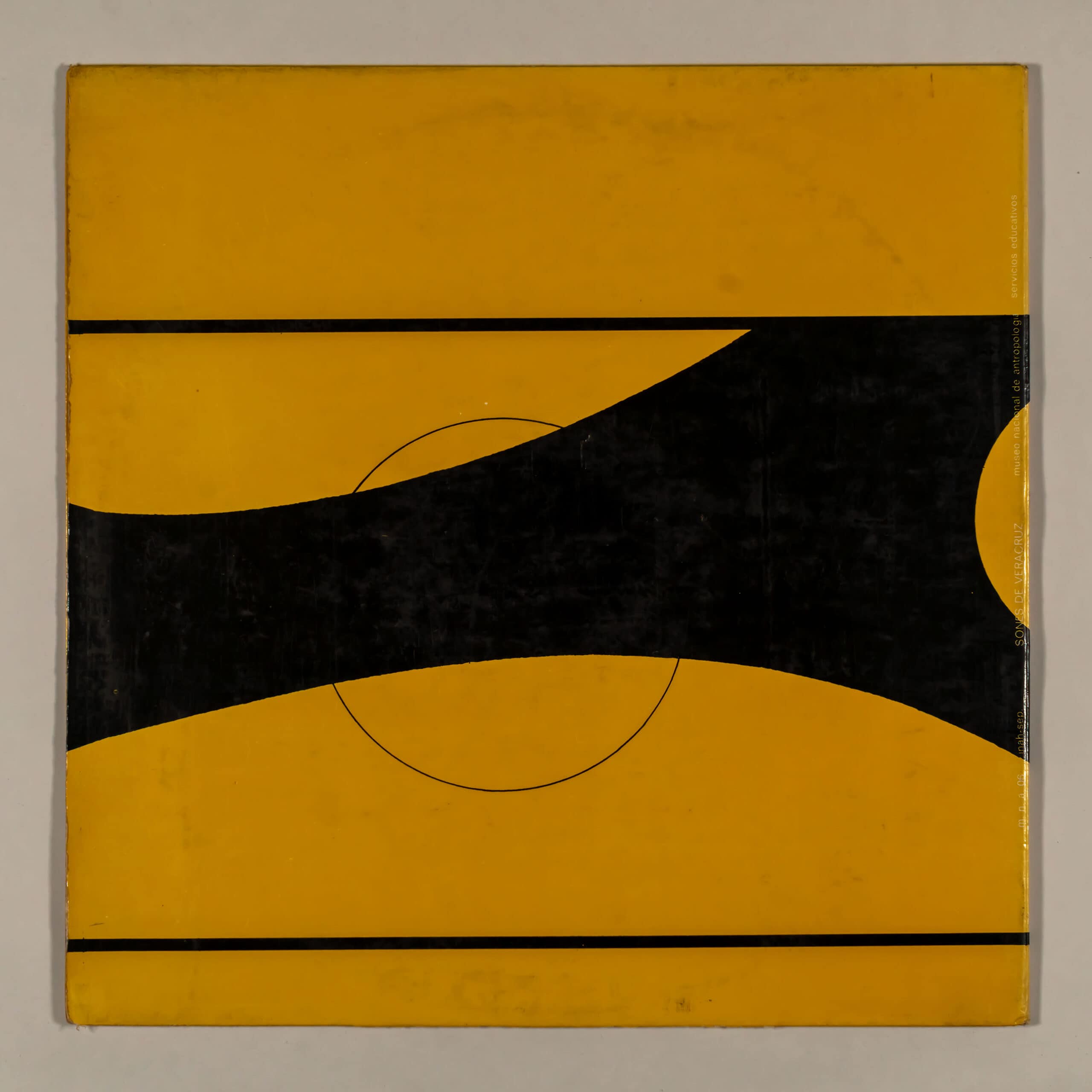
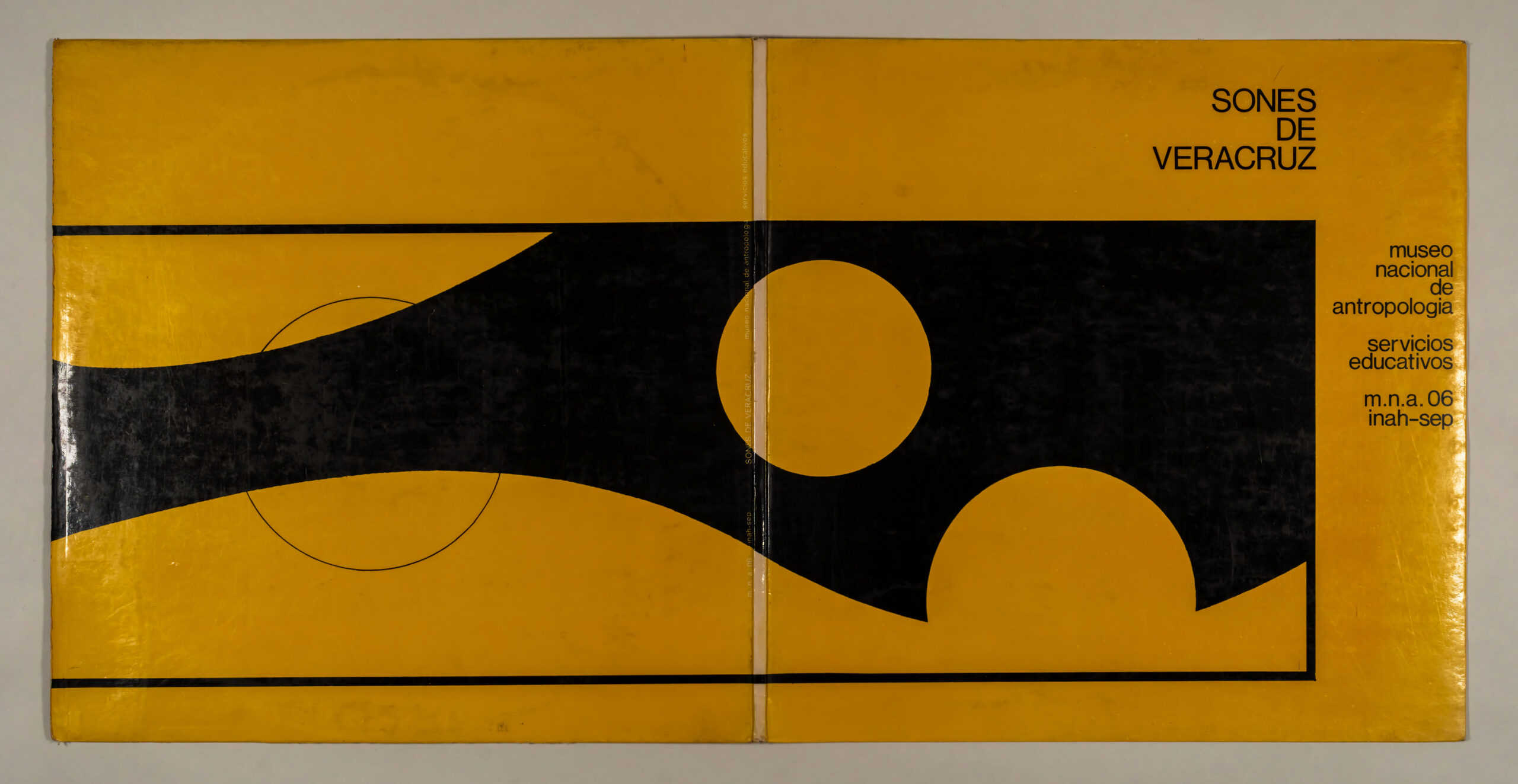


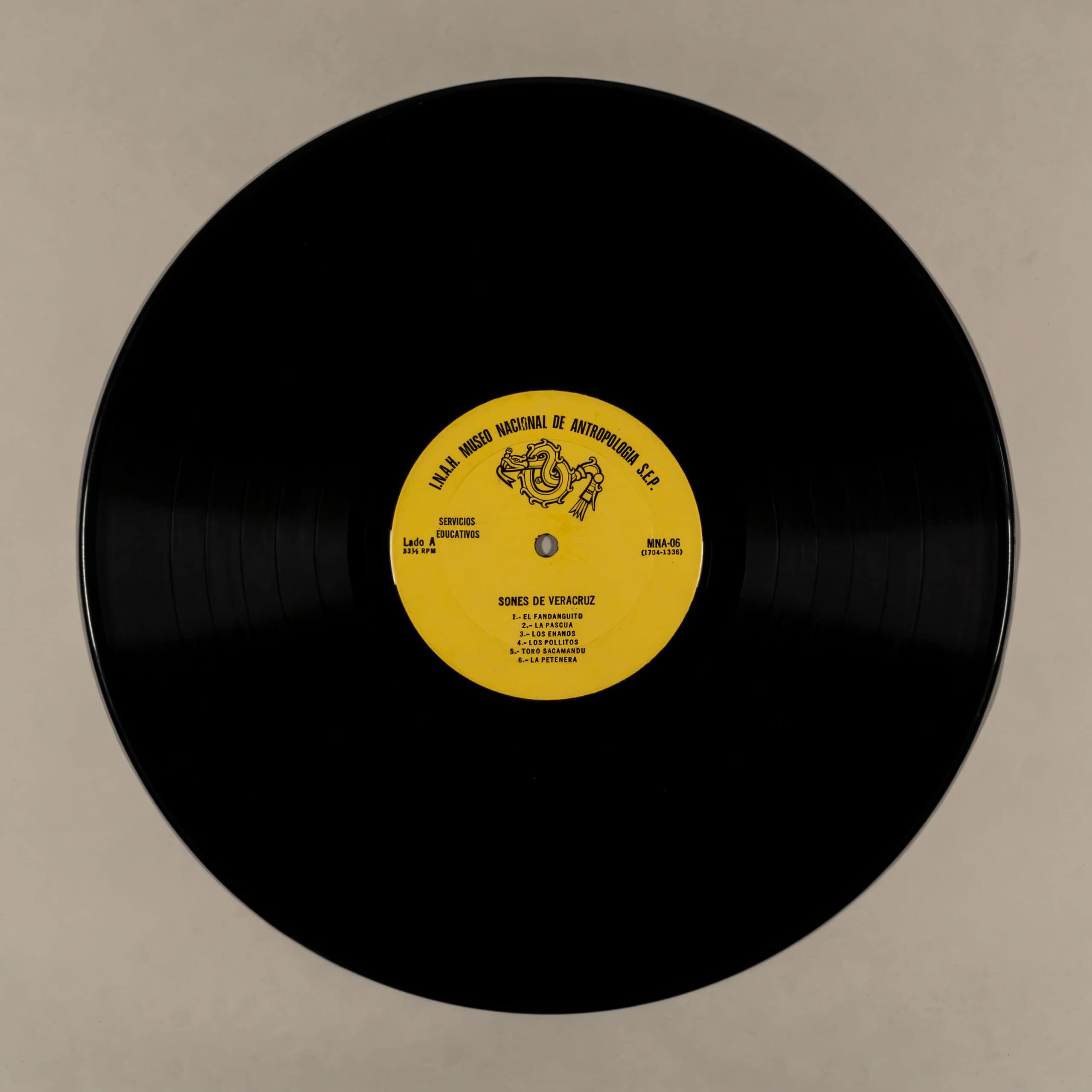
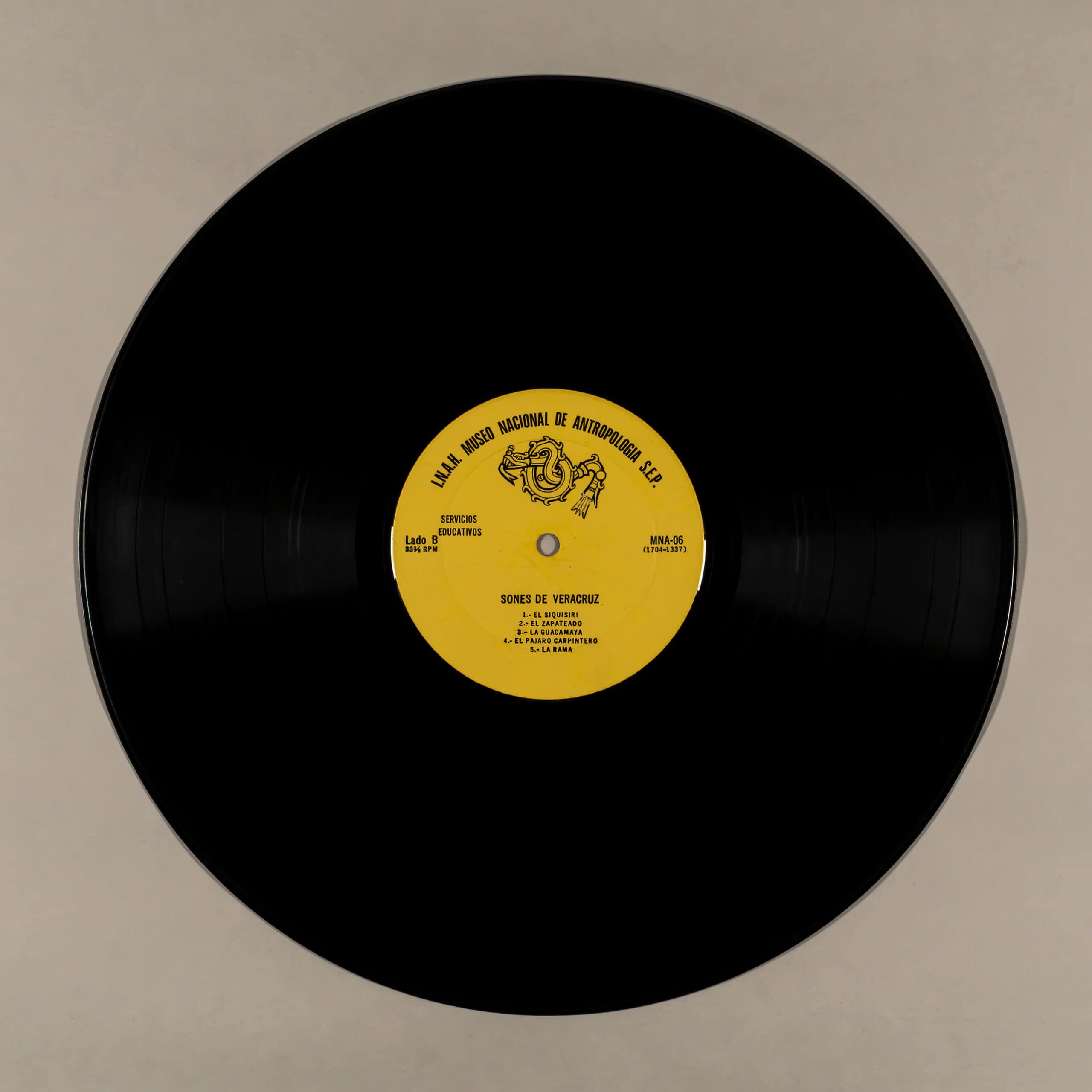
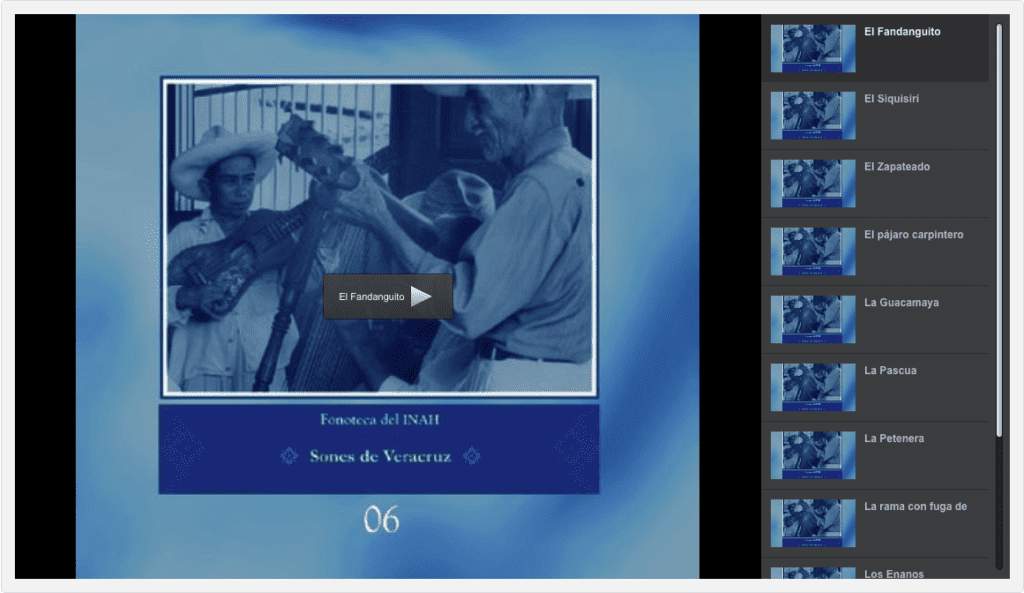
 NM SONES of VERACRUZ national museum of anthropology Mexico MNA06 LP NEAR MINT
NM SONES of VERACRUZ national museum of anthropology Mexico MNA06 LP NEAR MINT
